Although mosquitoes are the first insect we think of when talking blood-feeding insects- there are a few others that can make our skin crawl at the thought of them on us or in our homes. The insects discussed below are little insect vampires that do not fly, but crawl, jump, hitch-hike, or just sit in wait for their victim to come along.
CAT FLEA
Scientific Name: Ctenocephalidaes felis
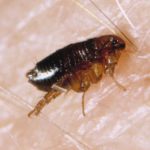
Where they are found: Cat fleas are usually on or around the host which can be cats, dogs, livestock, wildlife, or people. Both genders of adult fleas feed on blood. The larval stage develops off the host – usually in pet bedding or on organic material.
Rodent fleas can vector plague, but cat fleas are not important vectors of disease. However, cat fleas do have the ability to transmit tapeworm between dogs and cats.
BED BUGS
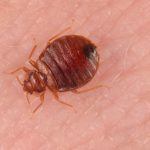
Scientific Name: Cimex lectularius
Where they are found: Bed bugs are found just about anywhere people congregate- homes, restaurants, planes, trains, cars, libraries, hospitals, etc. They are very good at hiding in small cracks and crevices. All life stages of bed bugs are dependent on blood to survive. Besides people, bed bugs will feed on chickens, bats, and domestic animals as a last resort. They are not known to be vectors of human disease.
HEAD LICE

Scientific Name: Pediculus humanus capitus
Where they are found: Head lice are found almost exclusively on people, hiding on the head while clinging to strands of hair. They can be transferred between people through head-to-head contact, sharing combs, hats, scarves, or other personal items. All stages of head lice require blood meals. They are not an important vector of human disease.
TICKS
Deer Tick or Blacklegged Tick
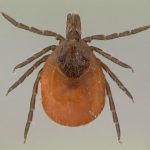
Scientific Name: Ixodes scapularis
Where they are found: Deer ticks are found in or near wooded areas. Deer are the preferred host, but they will feed on small rodents, birds, reptiles, amphibians, or mammals (including people). Each life stage requires a new host and all life stages feed exclusively on blood for survival. This tick is known to vector Lyme disease.
Brown Dog Tick
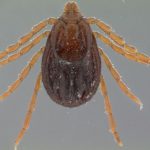
Scientific Name: Rhipicephalus sanguineus
Where they are found: The Brown Dog tick is most commonly found in warm, urban areas around and inside homes. The have a wide host range including mammals, deer, rodents, people, and especially dogs. All stages need blood to survive. The Brown Dog tick is the primary vector for Rocky Mountain spotted fever in the Southwestern United States and along the U.S.-Mexico border.
Lone Star Tick
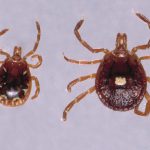
Scientific Name: Amblyomma americanum
Where they are found: The Lone Star Tick is distributed in the eastern U.S., but most common in the South. They live in wooded areas with underbrush and along creeks and rivers. They prefer to be near animal resting places. This tick feeds on birds, rodents, wildlife, livestock, humans, and especially deer. They are a known vector of Rocky Mountain spotted fever.
TROPICAL FOWL MITE and NORTHERN FOWL MITE
Scientific Name: Ornithonyssus bursa (tropical fowl mite) and Orinthonyssus sylviarum (Northern fowl mite)

Where they are found: These mites are serious pests of domestic fowl and wild birds. They have been known to attack bandicoots and gerbils, but rarely found on mammals. If their primary host (a bird) is not available, then they will bite humans! Both nymphs and adults feed on blood. Mites are found on nesting birds and within the nest material. Once a bird abandons the nest, the remaining mites will look for a new host. They will move into buildings through windows, doors, cracks, and vents until they find a new host. Discouraging birds from nesting in or around buildings will stop potential mite infestation. Also removing all vacated nests quickly will keep any mites from venturing out of the nest. It is also a good idea to wash the walls with a blast of water (outside) or steam clean. The good news is that they do not vector disease and they can only live for about 10 days away from their primary host.
Additional information can be found at:
The Centers for Disease Control and Prevention (the CDC):
Featured Creatures:
- Cat flea, Ctenocephalides felis
- Bed Bug, Cimex lectularius
- head louse, Pediculus humanus capitis
- Tropical fowl mite, Ornithonyssus bursa
Photo Credits:
L. Buss – black legged tick, brown dog tick, lone star tick, bed bug
J. Castner – cat flea
 1
1
